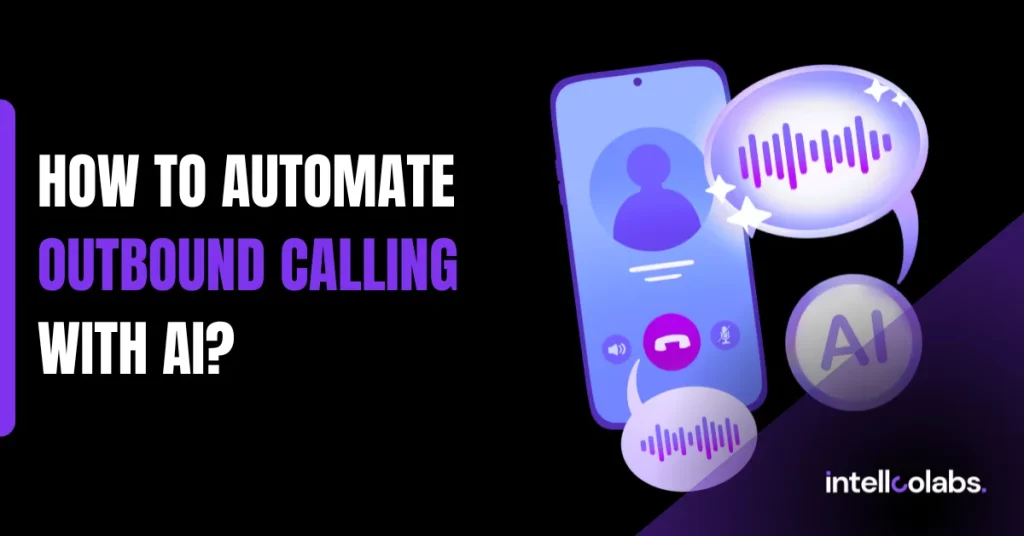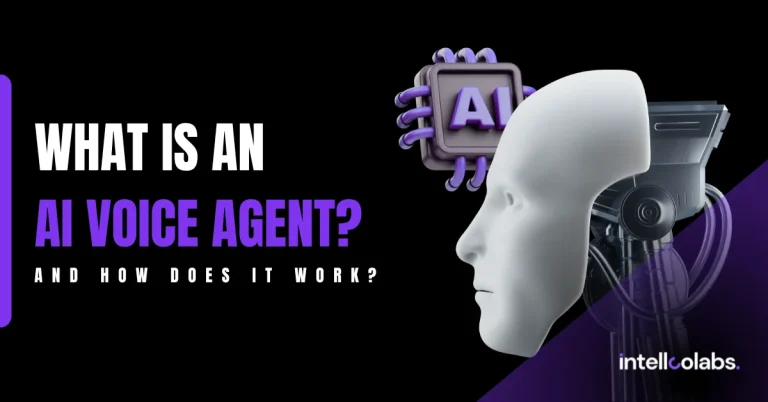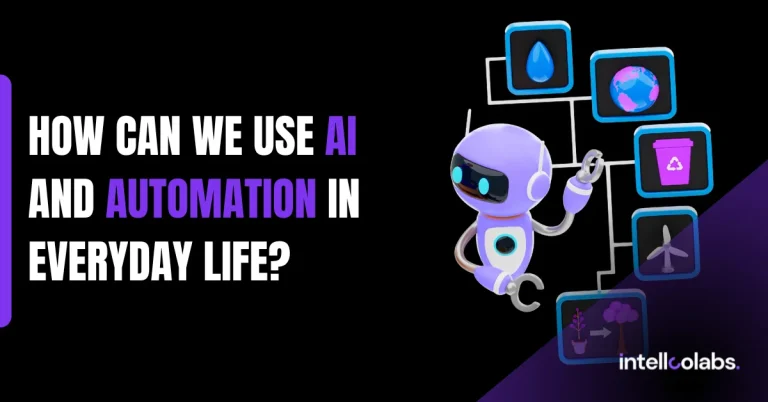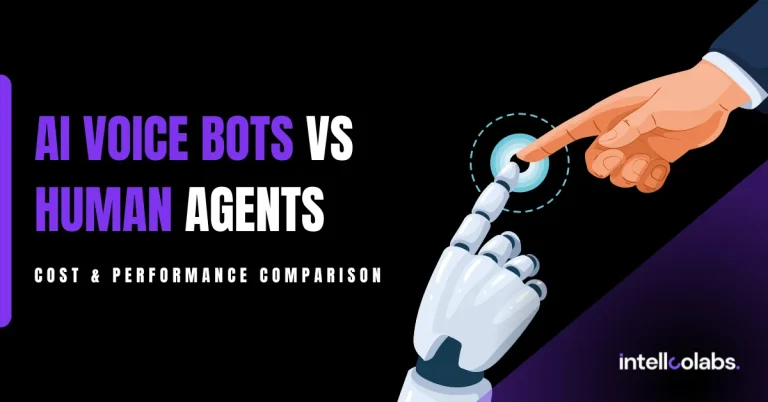
For decades, outbound calling has been a vital lever in customer engagement and business growth. From booking demos and confirming appointments to reactivating cold leads and collecting feedback, it’s a high-touch, high-volume operation. But it’s also expensive, error-prone, and nearly impossible to scale using humans alone.
Now, that equation is changing. AI-powered outbound calling is no longer a research project. It’s a deployable, cost-effective tool that’s helping businesses scale outreach, reduce operational overhead, and unlock new layers of customer interaction without hiring massive sales or support teams.
This article outlines exactly how organizations are automating outbound calling using AI voice agents, what tools and tactics are proving effective, and how to set up a system that works in the real world.
What Is AI-Powered Outbound Calling?
AI-powered outbound calling is the process of using voice AI agents to initiate, manage, and complete outbound phone calls without human involvement. These systems use a combination of text-to-speech (TTS), speech-to-text (STT), natural language understanding (NLU), and logic trees to handle full conversations with leads or customers.
Unlike robocalls or pre-recorded voicemails, these AI agents are capable of real-time, two-way dialogue. They understand context, respond to objections, personalize their responses, and dynamically route calls or trigger workflows based on live interactions.
A properly set up AI calling stack typically includes:
- A voice engine to handle natural conversation
- CRM or database integration for personalization
- Business logic for call routing, retries, and fallbacks
- Analytics to track success and iterate campaigns
This isn’t a replacement for human intelligence. It’s an automation of human repetition.
Where Outbound Calling Automation Is Used Today
AI outbound calling is already delivering value across sectors, with use cases tailored to specific industries. Below is a table outlining how businesses are applying this technology today:
| Industry | Use Case |
|---|---|
| Healthcare | Appointment reminders, follow-up scheduling, patient check-ins |
| Real Estate | Property tour confirmations, listing follow-ups |
| SaaS | Cold outreach, lead qualification, demo booking |
| Finance | Payment reminders, loan status updates |
| Logistics | Delivery confirmations, missed delivery re-attempts |
| Education | Enrollment verification, class reminders, fee updates |
These are high-volume, time-sensitive workflows that were once bottlenecked by manual teams. AI now makes them instantly scalable.
Choosing the Right Tools to Automate Outbound Calling
Depending on your team’s technical comfort level and scale, you have several options:
1. No-code/Low-code Platforms
For teams with limited engineering resources, platforms like Retell AI, Vapi AI, and Synthflow AI offer drag-and-drop call design, customizable voice agents, and CRM integrations. These tools typically require no coding and can launch campaigns in hours.
Voiceflow adds additional control with visual scripting, logic branching, and natural language handling, making it ideal for custom conversation paths.
2. Developer-Friendly APIs
For companies with in-house engineering, tools like Twilio Programmable Voice combined with OpenAI or Google Dialogflow CX offer full control. These setups allow you to build custom agents, train them on your own datasets, and integrate them into any backend system.
Deepgram, AssemblyAI, and ElevenLabs can be used for high-accuracy transcription and realistic speech synthesis, allowing for brand-aligned voice cloning and dynamic response handling.
3. Hybrid Platforms
Products like Tether, Cognigy, and SmartAction provide both visual editors and developer APIs, ideal for mid-size enterprises that need enterprise-grade capabilities without deep custom builds.
Step-by-Step: How to Automate Outbound Calling with AI
1. Define Your Campaign Goal
Start with a clear objective. Are you looking to qualify leads, confirm appointments, collect feedback, or follow up on missed inquiries? Define the target outcome before you design your AI agent.
Good goals are binary and trackable: booked meeting, completed survey, confirmed payment, or callback request.
2. Design the Conversation Flow
Conversation design is the foundation of a great AI calling experience. Keep prompts concise, use natural phrasing, and always offer clear paths forward.
A well-designed flow includes:
- Greeting and identification
- Personalization (name, product, last interaction)
- Open-ended and close-ended questions
- Clarification handling (e.g. “Could you repeat that?”)
- Objection responses (e.g. “I’m not interested”)
- Escalation paths (e.g. “Would you like to speak with a human?”)
Best practice is to script three layers deep for every branch, accounting for misunderstanding, silence, or rejection.
3. Build or Select Your Voice Agent
Choose a voice that aligns with your brand. Male or female, friendly or formal, neutral or regional accent—these choices matter. Many platforms now allow you to clone a human voice and maintain consistent tone across campaigns.
Make sure your agent is trained on:
- Common objections
- Industry-specific vocabulary
- Slang and acronyms
- Dynamic personalization tokens (like [first name], [company], [product])
4. Integrate with Your CRM or Database
Your AI agent should pull real-time data from your CRM (like HubSpot, Pipedrive, or Salesforce) and push updates back after the call. This enables personalization on the front end and campaign tracking on the back end.
Use middleware like Make.com, Zapier, or native APIs to sync lead status, call outcomes, and appointment bookings.
5. Set Up Dialing Logic and Scheduling
Intelligent automation includes smart dialing systems. Configure:
- Time zone-based scheduling
- Call retries (e.g. retry in 2 hours if missed)
- Do Not Disturb filters
- Frequency caps (e.g. max 3 attempts in 7 days)
Many platforms allow automated throttling based on lead score or activity, ensuring higher-priority leads get earlier calls.
6. Test and Deploy
Before scaling, run internal QA tests. Validate:
- Audio quality
- Script logic paths
- Fallback handling
- Logging and CRM updates
Start with a small cohort of real users. A/B test your scripts. Track call durations, drop-offs, and success rates. Iterate weekly.
Measuring and Optimizing AI Call Campaigns
Automation only works if you measure it. These are the five key metrics every AI calling system should track:
| Metric | What It Measures |
|---|---|
| Call connection rate | % of calls that were answered by a person |
| Conversation completion | % of calls that reached logical end-point |
| Conversion rate | % of calls that met the campaign goal |
| Escalation rate | % of calls transferred to humans |
| Script failure rate | % of calls that broke due to misrecognition |
Pair these metrics with call sentiment analysis and conversation transcripts to understand emotional tone and identify friction points.
Use Looker Studio, Airtable dashboards, or your CRM analytics to monitor trends over time.
Common Pitfalls and How to Avoid Them
1. Overcomplicated Flows: Avoid long monologues or nested logic trees that confuse users. Break conversations into small chunks with natural pauses.
2. Ignoring Compliance: Always follow TCPA, GDPR, and local telemarketing laws. Use opt-in lists, record user consent, and offer opt-out prompts.
3. No Human Backup: AI cannot yet close complex deals or handle emotionally charged situations. Always provide a fallback option to route the call to a live agent.
4. One-Size-Fits-All Scripts: Don’t use the same agent or script for all verticals. Customize your flow and tone for industry, persona, and campaign type.
The Future of Outbound Calling with AI
The future of outbound calling isn’t just more calls. It’s smarter calls. AI agents will soon combine voice, email, SMS, and LinkedIn messaging into multi-channel outreach engines.
They will prioritize leads based on CRM scoring, automatically adapt their tone based on call history, and learn from past campaign data to refine future conversations.
Multilingual support will be standard. Voice cloning will offer hyper-personalized outreach. And AI will handle entire pipelines autonomously—from first touch to meeting booked.
McKinsey estimates that AI could reduce contact center operating costs by up to 40 percent by 2030. Outbound calling, traditionally a human-only zone, is leading that shift.






